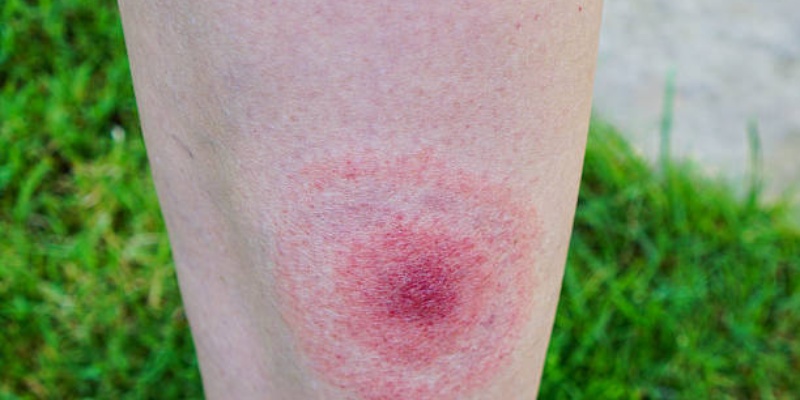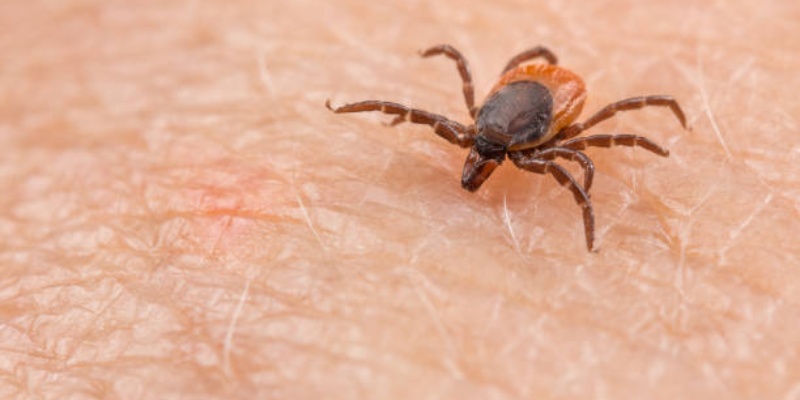I had no idea a walk in the woods would alter my view of summer. I made my find last summer when I noticed a tiny tick on one leg after a walk with friends. I flicked it off, but days later, I developed a red rash—a bullseye appearance—right where the tick was. This is when I learned about Lyme disease.
I had no idea a walk in the woods would alter my view of summer. I made my find last summer when I noticed a tiny tick on one leg after a walk with friends. I flicked it off, but days later, I developed a red rash—a bullseye appearance—right where the tick was. This is when I learned about Lyme disease.
Since the number of cases has increased yearly, I am inclined to spread the knowledge gained so that you remain protected this summer.
What Is Lyme Disease?
Lyme disease is an infection caused by bacteria that are spread through the bite of ticks. The ticks are tiny, smaller than a sesame seed, and live in grassy woodland areas. When they bite, they transmit the bacteria carried around the body. Most individuals recover with treatment, but some experience long-term symptoms if left untreated.

Why Is Lyme Disease On The Rise?
Lyme disease is spreading more quickly than ever, experts say. With warmer temperatures, ticks are active for extended periods, and more people are outside. Hiking, camping, or even gardening puts you at risk. In the United States alone, tens of thousands of cases are reported yearly, but many others are never diagnosed.
Early Signs To Look Out For
Early indications of Lyme disease typically manifest within days or weeks following the bite of a tick. Be aware of:
The Bullseye Rash
The most well-known symptom is a round red rash that spreads outward, forming a "bullseye" pattern. However, not everyone develops this rash—estimates are that as few as 70% of infected people see it.
Flu-Like Feelings
Fever, chills, fatigue, and muscle pains are all initial symptoms. You might initially suspect a summer cold, but if you have been outdoors, you should look for other signs.
Joint Pain
Inflamed, stiff joints—especially in the knees—can be an early symptom. Following my hike, this was my initial symptom that something was amiss.
Later Symptoms, If Untreated
If not treated, Lyme disease can lead to more severe complications several weeks or even months afterwards:
Neurological Disorders
Certain people experience numbness, tingling, or paralysis of the face. Memory confusion and poor concentration also result.
Cardiac Problems
Occasionally, the infection reaches the heart, leading to irregular heartbeats or dizziness.

Chronic Fatigue
Despite treatment, some individuals are left with persistent fatigue or muscle aches. Researchers believe this may be due to lingering inflammation or bacterial remnants.
Why Summer Is The Peak Season
Ticks thrive in warm, moist environments. From May through September, they are most active, waiting in tall grass, under piles of leaves, or in shrubs. Participating in summertime outdoor activities—picnics, hikes, or romps in the backyard—puts us in their path. Kids are especially at risk because they often play close to the ground.
How To Protect Yourself
Prevention is key to avoiding Lyme disease. Here’s how to stay safe:
Cover Up
Wear long sleeves, pants, and closed shoes in wooded or grassy areas. Tuck pants into socks to block ticks.
Use Repellent
Apply insect repellent with DEET or picaridin. Treat clothing with permethrin for extra protection.
Check for Ticks Daily
After being outdoors, inspect your body, especially warm spots like behind the knees, underarms, and the scalp. Showering within two hours of coming inside can wash off unattached ticks.
Remove Ticks Quickly
If you find a tick, use fine-tipped tweezers to grasp it close to the skin and pull it out immediately. Then, clean the area with soap and water.
When To See a Doctor
See a doctor immediately if you develop a rash or flu-like symptoms after a tick bite. Blood tests can confirm Lyme disease, and antibiotics are most effective when started early. Even if you don't remember a bite, don't ignore symptoms—ticks can attach and detach without noticing.

The Bigger Picture
Lyme disease isn't the only tick-borne illness to worry about. Others, like anaplasmosis or babesiosis, are also on the rise. Protecting yourself from ticks helps prevent all these infections.
Staying Safe This Summer
I still love hiking, but now I’m more cautious. I check for ticks after every outing, wear protective clothing, and keep repellent handy. Lyme disease might be scary, but knowledge and preparation go a long way. This summer, enjoy the outdoors—but stay vigilant. Your health is worth it.
- Share this article:
-
![From Tokyo To Kyoto: A Two-Week Itinerary For The Best Of Japan]() Travel
Travel - From Tokyo To Kyoto: A Two-Week Itinerary For The Best Of JapanHave you ever wished to stroll through Tokyo's neon-lit streets? Or have you dreamed of exploring temples in Kyoto and relaxing in an onsen hot spring with stunning mountain views? Japan offers an extraordinary travel experience that combines established traditions with its innovative modern culture. Making the most of your trip becomes challenging since Japan has many remarkable destinations.
-
![Switzerland: A Traveler's Dream Destination]() Travel
Travel - Switzerland: A Traveler's Dream DestinationHave you ever dreamed of standing on top of a snowy mountain? Or you can imagine being in charming villages with fantastic views. If yes, your dreamy destination is Switzerland, which offers impressive natural scenery, exciting activities, and cultural treasures.








